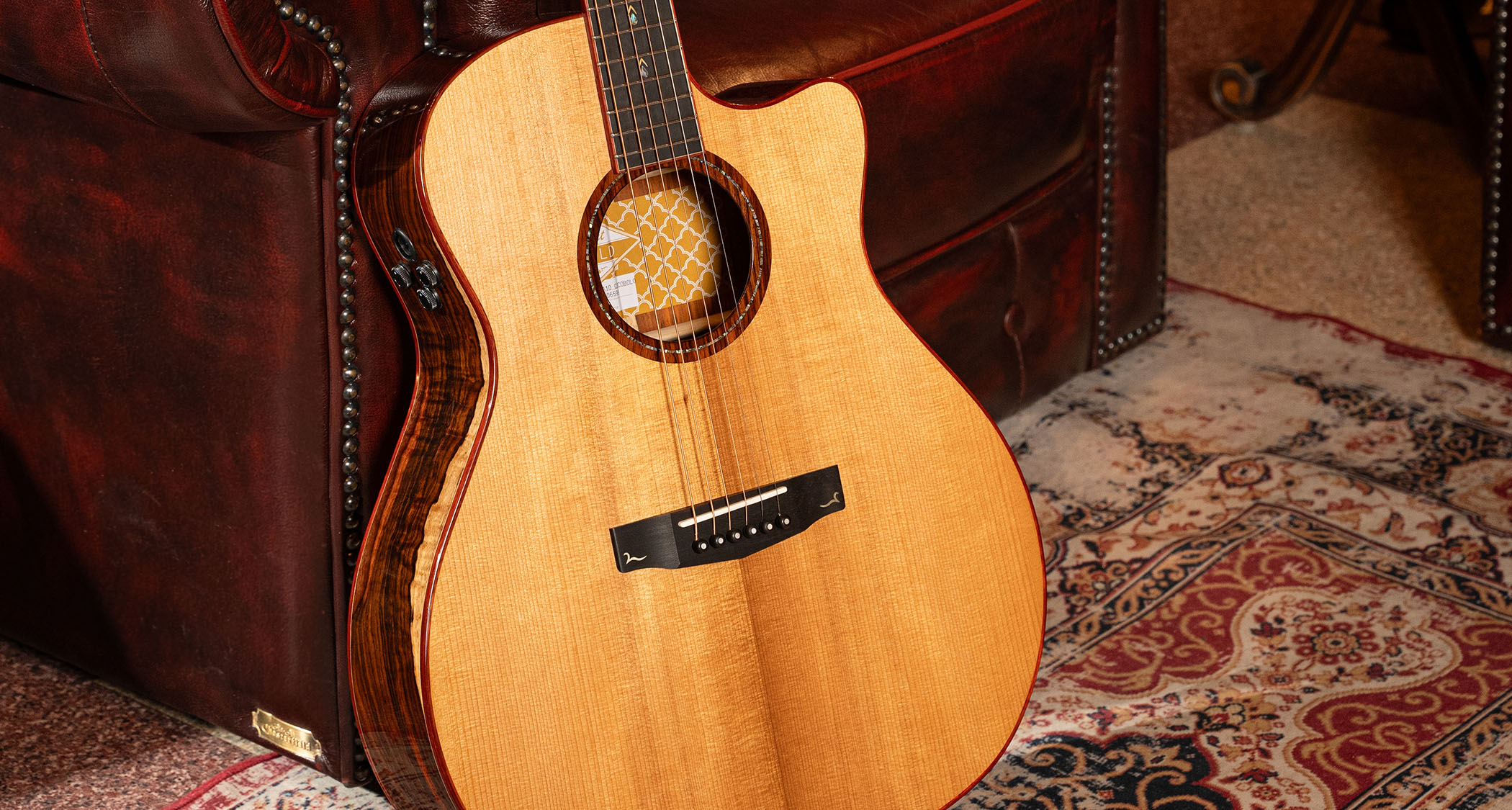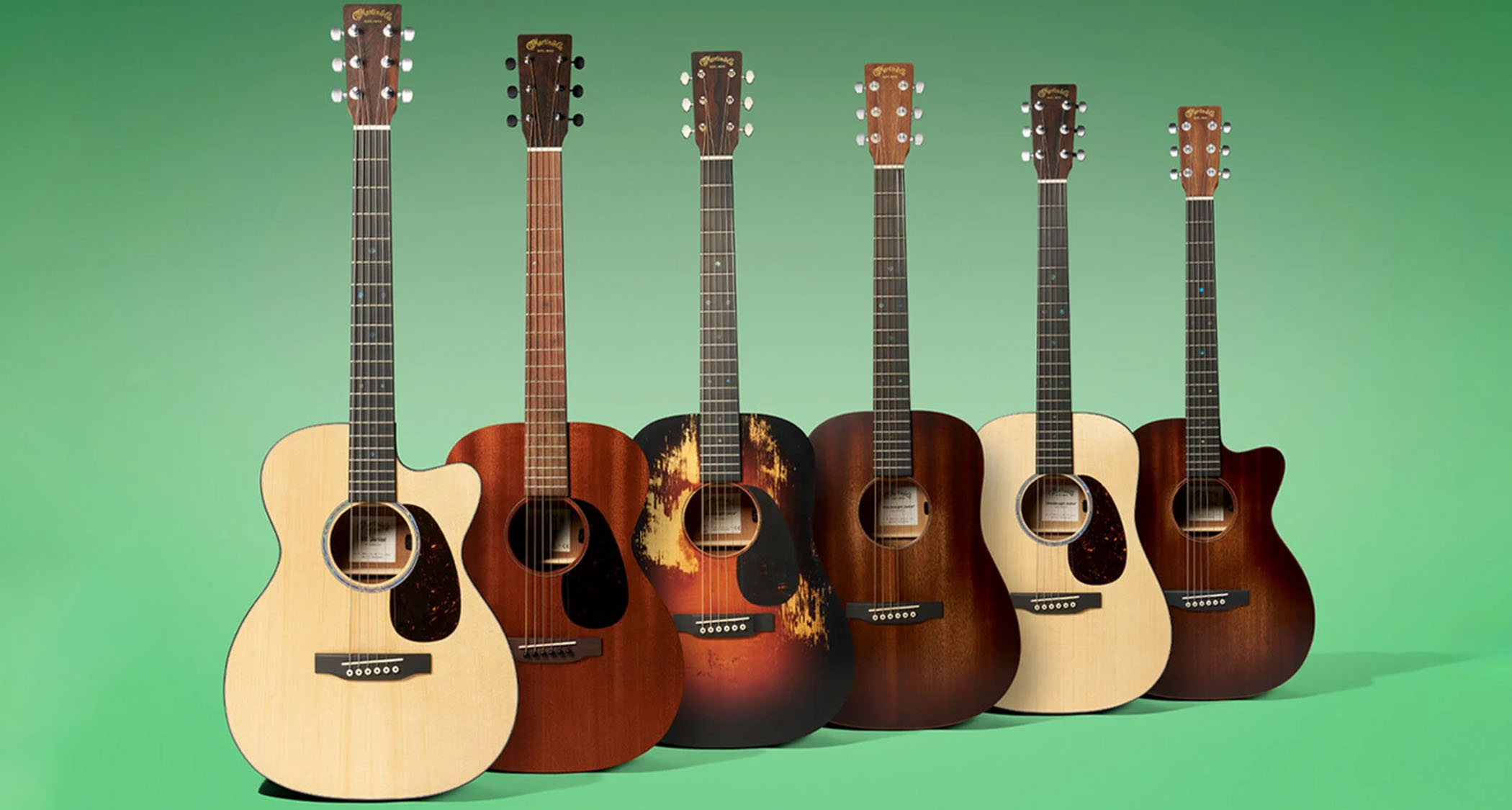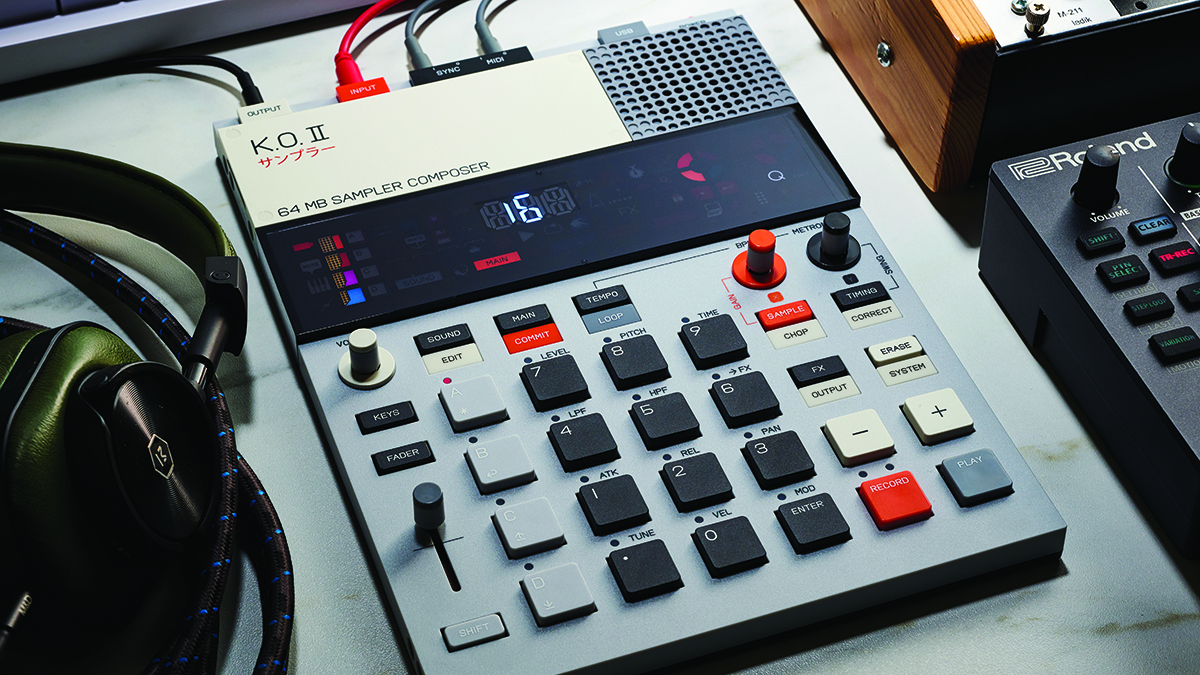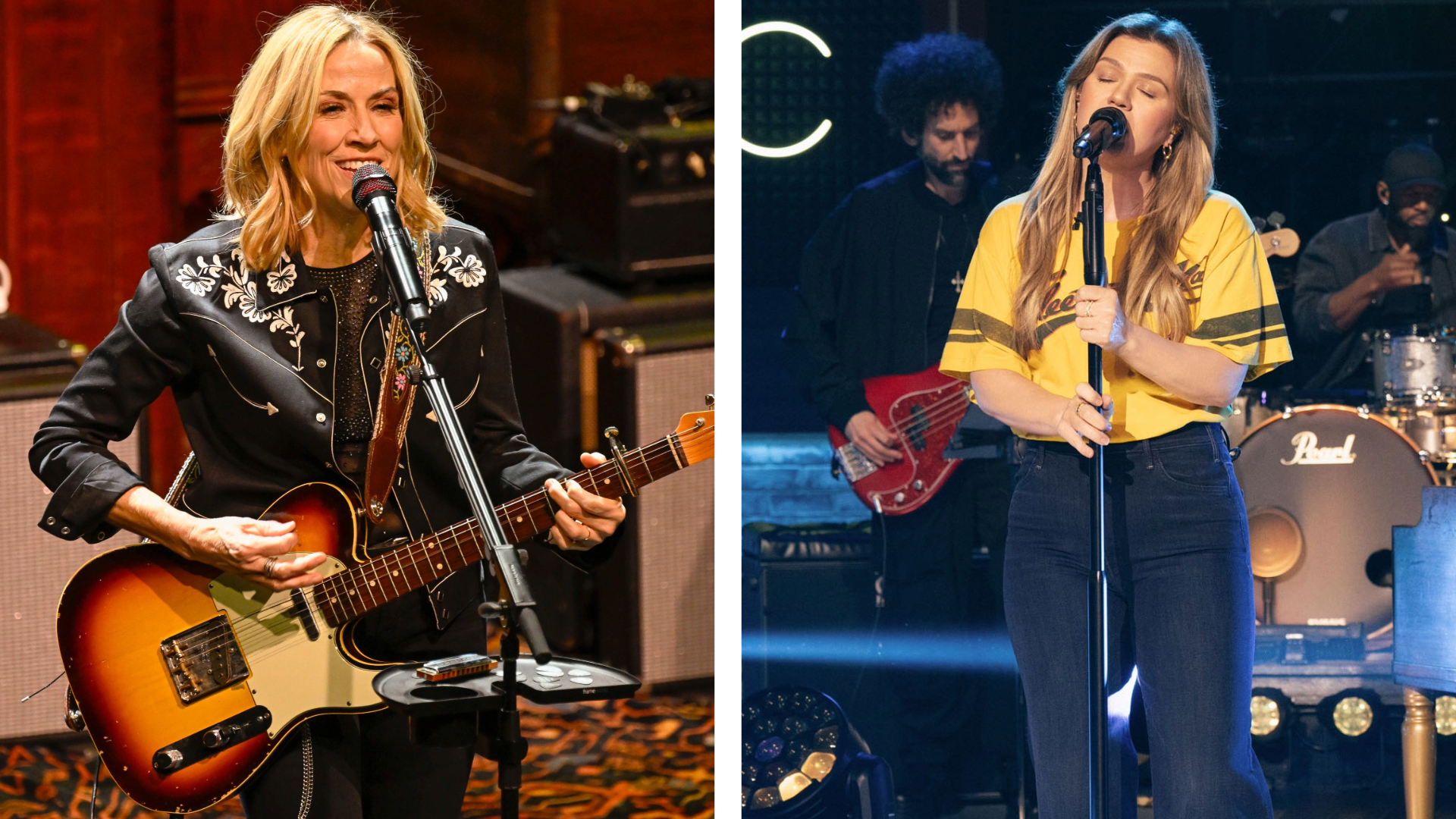“I don’t think I have ever done anything quite like this before”: Pat Metheny on the mythology around improvisation, and how a reconfigured baritone guitar compelled him to discover a “another universe” on new solo album MoonDial
MoonDial finds Metheny in the company of just a baritone and ribbon mic, and yet it takes jazz into a twilight world existing beyond time, where, he says, there is no future, no past
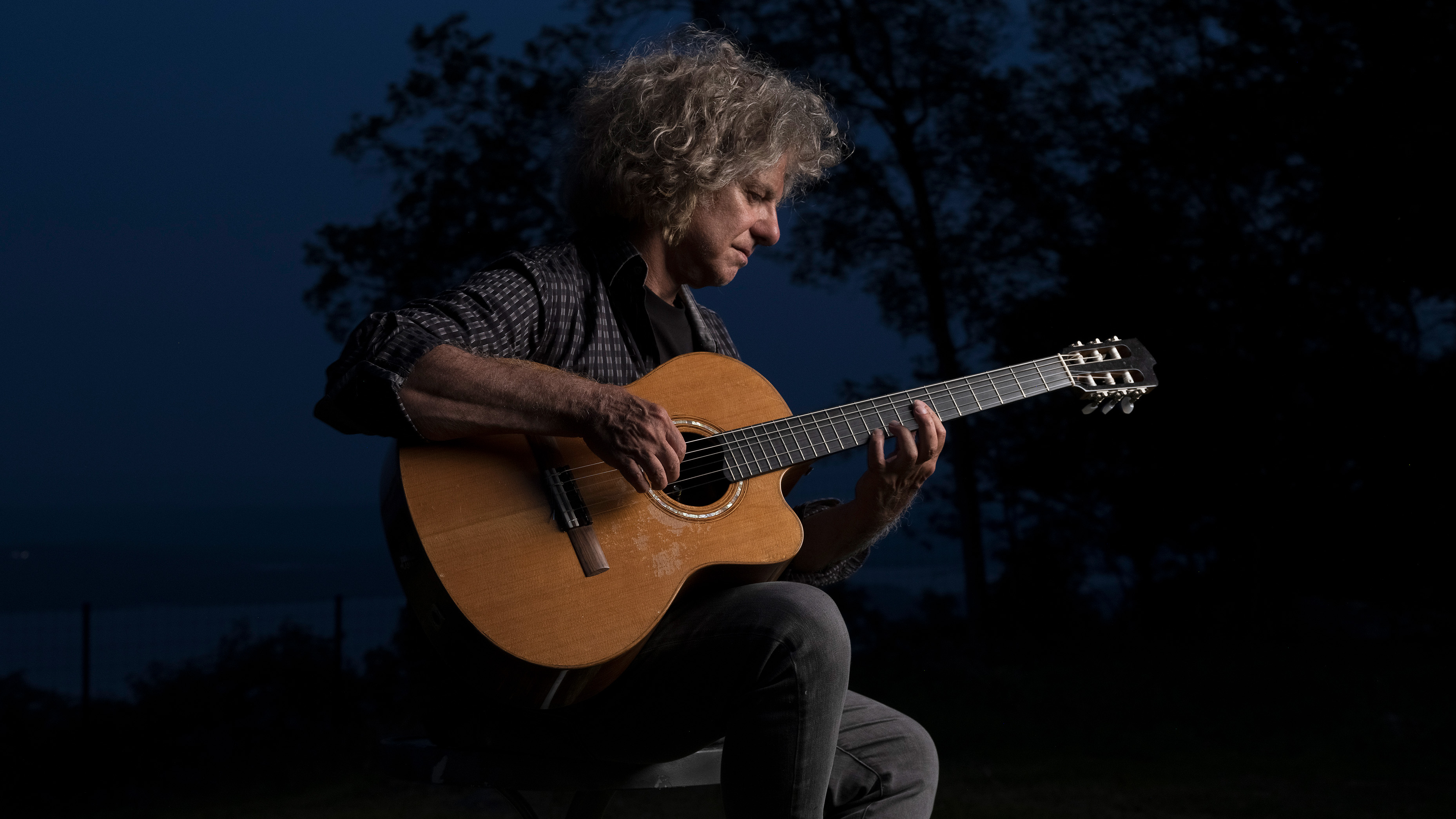
In the parlance of our time, Pat Metheny is a disruptor. Ever since he picked up a guitar and turned pro, he’s been daring the instrument to push further, to be more complete, for jazz guitar to be more harmonically conversant and sit in a space alongside the horns and the rhythm section. To be less parochial. To be more than the sum of its parts.
His latest album, MoonDial, out now via BMG, is unmistakably Metheny. Audaciously creative, it comprises reimagined jazz standards and original compositions, all performed and recorded solo. Even with the likes of Chick Corea’s You’re Everything, The Beatles’ Here, There and Everywhere, and Matt Dennis’ Angel Eyes familiar to us all, MoonDial is Metheny as you have never heard him before. It is Metheny as he has never played before. At least, not quite like this.
There are a few different reasons why. One, this was tracked on the road, completely solo, just one man and his guitar, some time snatched from the calendar. Second, it revolved around a Linda Manzer baritone nylon-string acoustic guitar in a custom tuning that not only redefines what we think of when we talk about an extended-range guitar, but a tuning that required an all-new set of custom nylon strings to get it to stay in tune.
This was the key, jimmying open the door to new musical possibilities. The result is an album that modulates between a late-night after hours feel and pre-dawn awakenings. The guitar has a warm three-dimensional low-end. In keeping with Metheny's sensibility, it feels more than just solo guitar. As Metheny says, the baritone acoustic made him think he had a string quartet under his fingers.
What would you do with that sort of potential? Well, MoonDial is what Metheny did, and this is how it came together…
I want to ask you about the practicalities of writing, recording and releasing an album while already on the road. What gave you the idea, and how did this baritone guitar influence your creative process?
“I don’t think I have ever done anything quite like this before in terms of going right into recording mode during what was a short break in the middle of a long tour. I just felt compelled to get right to it while my relationship to that instrument was so fresh and new.
Get the MusicRadar Newsletter
Want all the hottest music and gear news, reviews, deals, features and more, direct to your inbox? Sign up here.
My job as ‘bandleader’ for this project was to find tunes that allow this guitar to shine at its best
“Really most everything I have done in my life as a musician has mostly been under the banner of ‘bandleader’ – but a bandleader who is also going to be the person who will write most of the music.
“My main job has been finding instruments and even musicians that set up an environment that might allow the chance to achieve the kind of result I am hoping to get to for whatever music I happen to be writing or thinking about at a particular time; and then doing recordings and tours that reflects that period, whatever it may be. And in a lot of ways, this period is that same thing. It’s just that in this case, I am the bandleader of a band where I am the only one in it.
“And in particular, in the case of this guitar, my job as ‘bandleader’ for this project was to find tunes that allow it to shine at its best, just like I always have tried to do with the folks I have hired to be in my various groups over the years.”
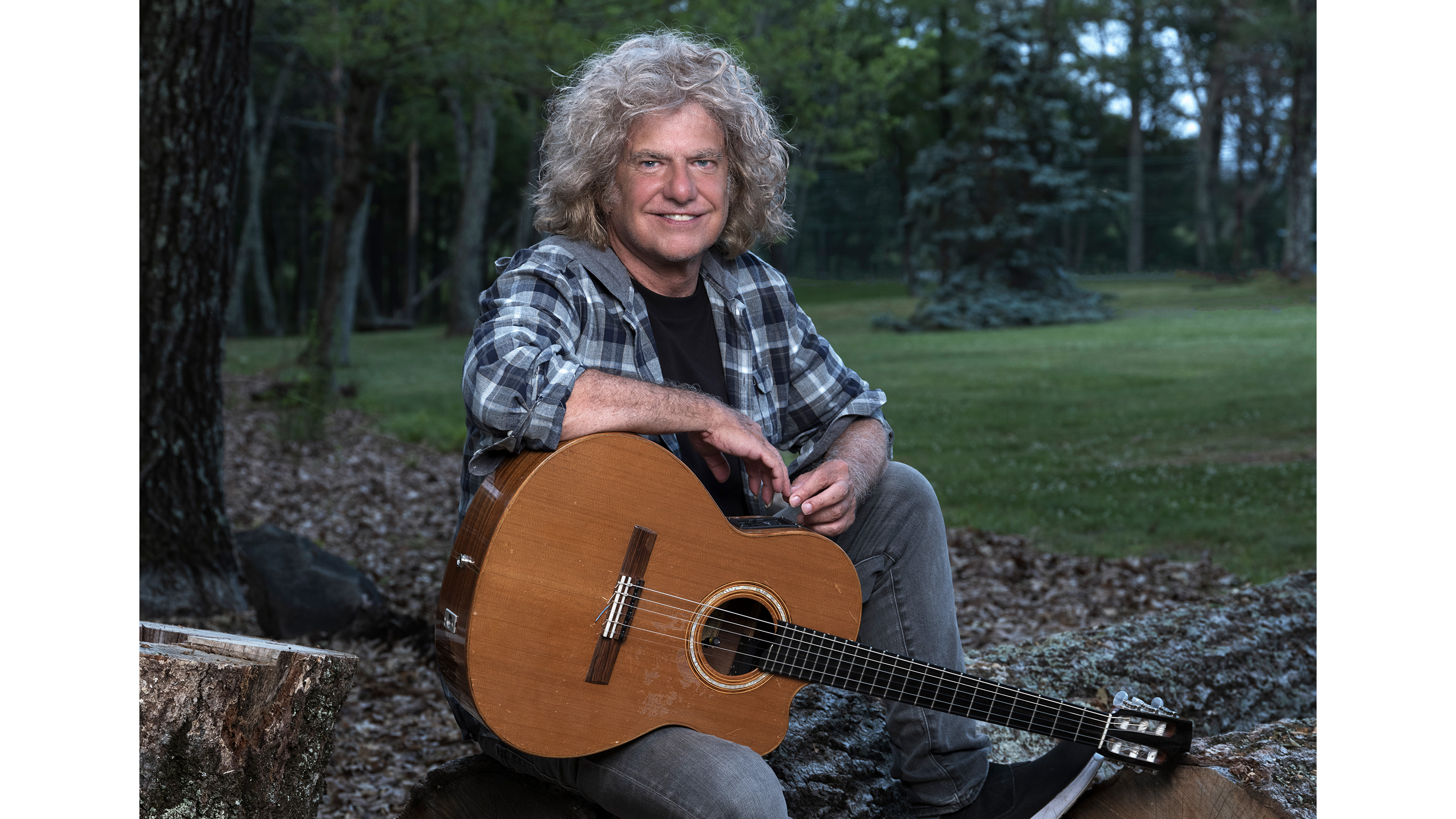
“This is the third pure solo guitar record I have done, all of them on baritone guitar, an area that I have been really interested in, in parallel with all the various other things I have been working on across the past years.
With an instrument like that in hand, a whole new world opened up for me
“The first baritone record was One Quiet Night where I remembered a way of using a baritone guitar in a tuning that a guy down the street from where I grew up showing me when I was a kid in Missouri; where the middle two strings are tuned up an octave.
“With an instrument like that in hand, a whole new world opened up for me. I was able to get to voicings and sounds that are just different from a regular guitar, but also requires an almost completely different way of thinking.”
Can you tell us about the tuning of this baritone and how it is configured?
“A baritone in this configuration is more like an instrument that within itself contains three two-string instruments that just happen to be sitting right next to each other; the top two strings being in the viola range, the middle two in the violin range and the bottom two in the cello range.
“Given the nature of how a guitar is laid out, that means the ‘viola’ player mostly has the melody and the violin player is often higher in pitch than the melody but playing an accompaniment role.
“That kind of thinking always suggested more like what happens when writing for a string quartet or something. That in turn suggests a more classical guitar type sound – but I was never able to find the right strings to allow that tuning on a nylon-string classical baritone guitar until just before this tour began. When I finally cracked it – it was like another universe opened up in that already different universe.”
So you just have to think about the musical context, and how the tunes would fit in with a band, or with an instrument such as this...
“I do try to follow the path suggested by each setting. If I have a band and one of the musicians is really good at this but not so good at that – I will write music for that band that is going to be more about this.
“Same goes for instruments – the nylon baritone likes hanging out in the zone that the tunes I picked to record in. In various sound checks along the way those were tunes I found myself playing, I kind of kept a list and those were the ones I was drawn to record.”
The Bb that I woke up playing this morning is exactly the same Bb that could have existed a million years ago or a million years in the future.
And the strings are some custom-wound set of nylon guitar strings from Magma, in Argentina – what can you tell us about them? What challenges would this tuning ordinarily present to nylon strings?
“I had had a baritone nylon string guitar from Linda Manzer for some years, but could never get it to work with the system I described above. Weirdly, I happened to run across a video of a player using them in a fairly extreme pitch configuration, saw some on Amazon, ordered them, put them on the instrument and in a few moments felt another universe open up for me.”
How did you record it? What microphone did you use for recording? And, indeed, where did you record it?
“It was recorded in a nice quiet room up in the Hudson Valley in the middle of the winter over a week or so. I used an AEA R88 ribbon mic with a Go Acoustic internal pickup.”
There’s a sense that all of these pieces are in a dialogue with the past, or a different era, as though the extended range of the baritone has its own sense of gravity and time. Is that one of the themes of the record? Indeed, is there a theme, a mood that is tying the compositions together?
“Things like historic chronology and even genre in general remain kind of inscrutable to me in conversations of just about anything having to do with music. The Bb that I woke up playing this morning is exactly the same Bb that could have existed a million years ago or a million years in the future.
“I feel lucky to be able to trade in that currency – a currency whose values are fundamentally true. In that realm, there really is no future or past. Good notes seem to remind us of something else, something more.”
Did this solo guitar setup give yourself space and permission to improvise as you were recording? Indeed, is that important for you more broadly in your projects, to leave room for improvisation when the red light is on and see where that energy takes you?
“Finding different platforms and environments that might allow me to find new ways of improvising is where 90-plus per cent of what is on my mind when coming up with some kind of new conception or idea begins; and that includes this recording.
“There is a kind of mythology around the word improvisation. When improvising on a composition, say a standard, there are a range of approaches that can work. Some may go far away from the original intent while others may follow the elements of the original composition more closely, almost to the point where it sounds like an extension of the composition itself – so it gets blurry.
“In a way, the better you get at that kind of improvising, the harder it is to tell whether it is improvised or not. Like with sound and orchestration, I like having a wide berth to explore those varieties.
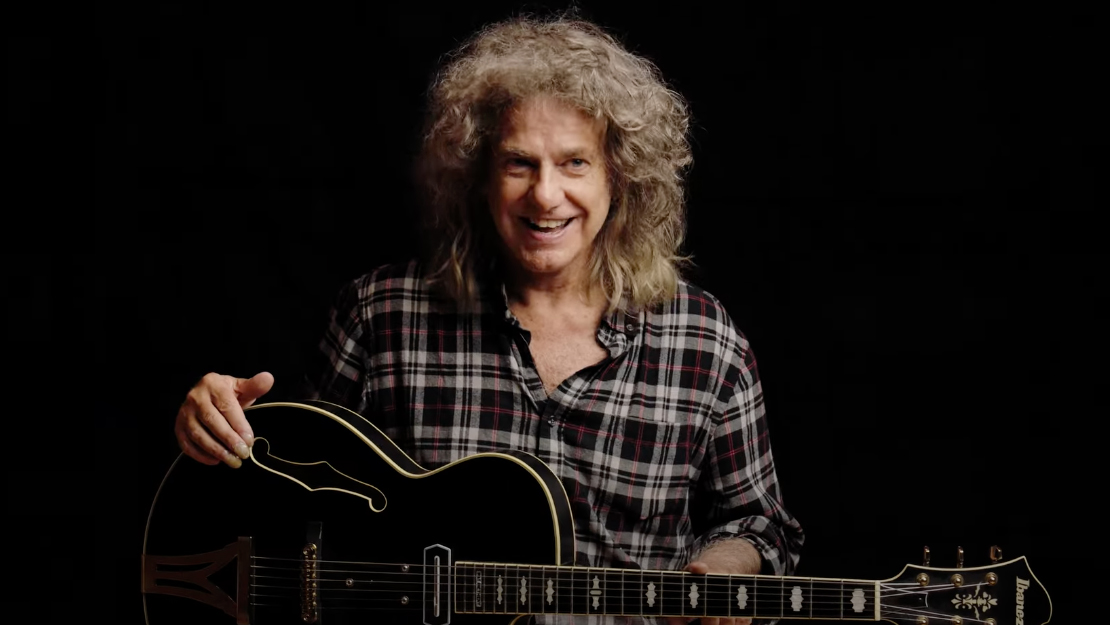
And you just have to follow your nose, see what works best…
“As far as where those various conceptions may lead, I always try to let the music at hand decide what direction I go in in terms of orchestration – in this case, it is the baritone nylon string in that particular setup.
“Depending on the mandates of the story at hand, I am pretty happy to play in a really dense way, or a really sparse way, or really loud or really soft or all over the dynamic range, really inside the chords or outside the chords… it kind of doesn’t matter too much for me – it is whatever seems to sound best for what is happening at that particular moment.”
Were looper pedals ever in the conversation for some of these arrangements?
“I did think about it. But it ended up not being right for this.”
This record reminds us that we have heard so many different versions of Angel Eyes over the years and yet there is still room to take it to some place new. This is maybe the darkest, the most melancholy. How did you choose the standards that you wanted to play on this?
“It is a tune I have played a lot, since I first started. There was a bandleader/trumpet player in KC named Gary Sivils who played that tune on almost every gig I did with him – and played it great.
Angel Eyes was the one tune I did think of using a looper for since the A section of the tune suggest a pedal point possibility. It turned out that just tuning the lowest string even lower allowed me to get to a similar place
“And actually, that was the one tune I did think of using a looper for since the A section of the tune suggest a pedal point possibility. It turned out that just tuning the lowest string even lower allowed me to get to a similar place just with the instrument itself.
“I have done the tune lots of different ways over the years including a very up tempo duet version with Gary Burton where I would do a kind of strumming thing. I think I did it that way with Jim Hall too. That is a good example of a tune that you can do anything with and it will always retain its essence. The best tunes seem to allow that.”
La Crosse is a really beautiful tune that has an almost dance-like quality to it, as though we are following a dancer through a routine with your guitar. With solo guitar, you are creating the rhythm yourself – where do you take inspiration for what kind of rhythm that might be? And does it help to have a vision like that in mind to get the piece to have the feel that you want?
“That is kind of an example of a particular groove that I have spent a lot of time thinking about, where it is an even 8th note feel in 3/4 or 6/8 but sometimes can register also as being in 2 or even in 4 to folks.
“It was always hard for me to explain it to rhythm section guys early on, but now it has become such a part of the thing that it is no problem to find young guys who really understand it. I am always surprised when I see folks patting their feet in 2 to tunes like that. To me they are clearly in 3 but slightly hidden.”
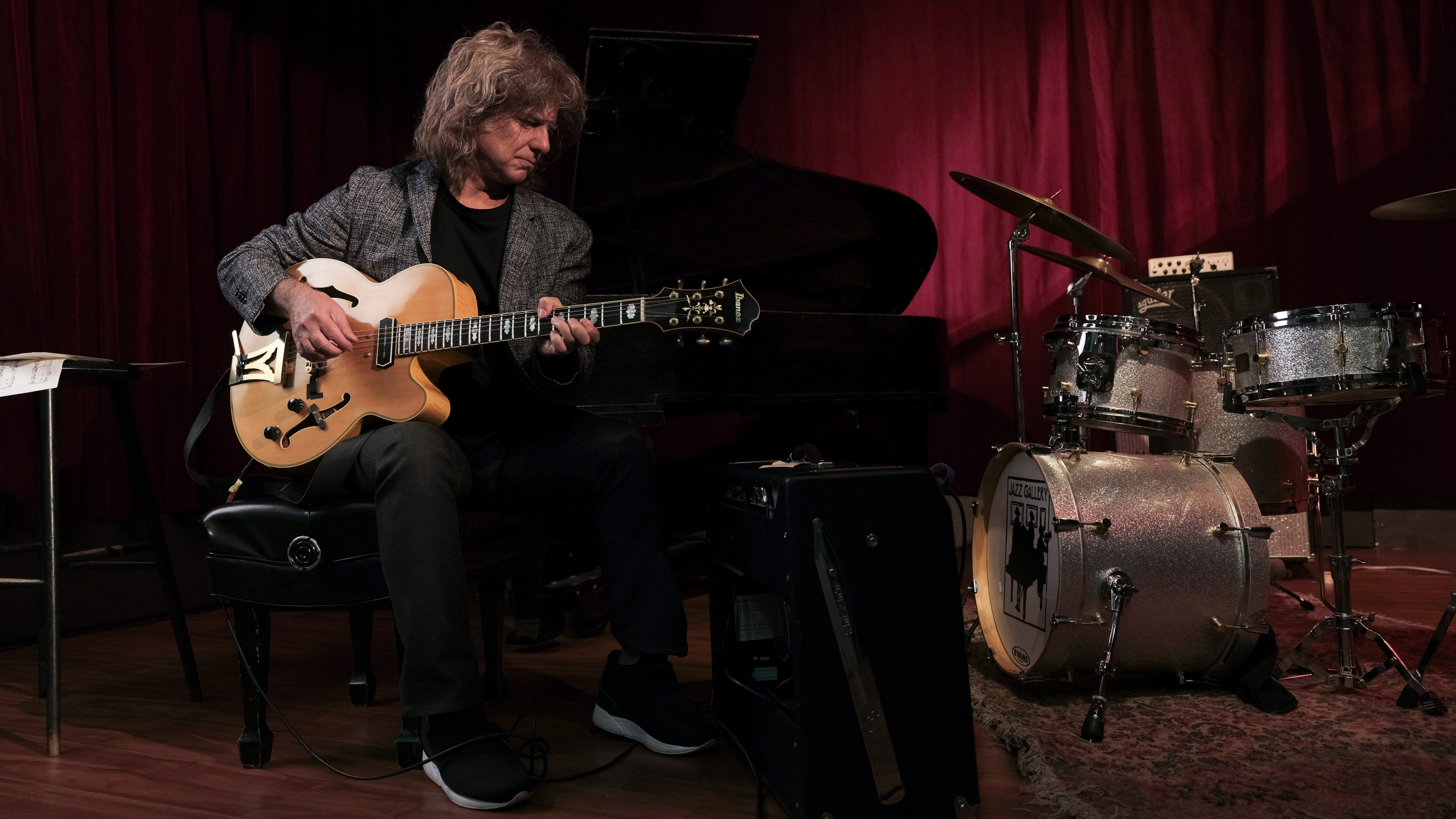
How has the nylon Baritone changed how think of approaching the guitar – and in is it a paradigm shift for you as the Roland synth guitar or Pikasso guitar was?
Once those strings were on there, I got a glimpse of a new kind of infinity sitting right there
“What is interesting and kind of gratifying to me is that regardless of which of the various types of instruments involved in the different things I do, most people can usually tell it is me. That kind of supports my theory that the conception behind something is more the point of it all, and the orchestration of it (in this case the different approaches to what a guitar might be) is secondary. That was always an aspiration for me.
“That said, what you pointed out is a really apt thing in all this – sometimes there is a new set of possibilities that reveal themselves almost instantaneously with a new instrument. You correctly noted the Roland and Pikasso – in seconds, I could see a whole bunch of new things being possible.
“And yes, the baritone nylon in this setup is exactly like that too – this is another time when once those strings were on there, I got a glimpse of a new kind of infinity sitting right there.”
Was it freeing in a sense to not do overdubs?
“There just wasn’t any need to do that, so it didn’t really come up.”
You are notoriously an early riser. Do you keep that same schedule when you are on the road and does that help keep you grounded creatively, having that routine, and applying it in these different contexts?
There was no one else around and I could really just zone into the thing – that is what the vibe of that record is
“The simple answer is that I have three kids, two dogs and a wonderful wife – and a very active family life. While at home, in the hours before everyone else is up I can get a lot done.
“The road thing is a radically different schedule that involves getting on the bus in the middle of the night and driving to the next city, every day, five or six different cities a week usually. So there isn’t a lot of sleeping going on.
“While making this record I was in a place by myself. I stayed up as long as I could, when I felt like I needed to sleep, I slept for a few hours, then got back to it. There was no one else around and I could really just zone into the thing – that is what the vibe of that record is.”
We started this conversation talking about a significant guitar. Let’s conclude it by talking about another, your forthcoming Ibanez signature guitar with the Charlie Christian pickup. How close is it, and what is it about those electric guitar pickups that is so hard to replicate? Watching Julian Lage and George Benson play Christian’s ES-250, you can see in their faces there’s something special there.
“Charlie’s ES-250 that George played is actually the third generation Charlie Christian pickup. It’s great, but my focus has been on the earlier generations that were featured on the ES-150.
“In essence they are the first single coil pickups, and my whole life until recently was in the realm of humbucking pickups (double coil). Both have their advantages. The new Ibanez guitar is exceptional, won’t be too expensive, and will offer a lot of players a window into that zone. I am pretty excited about it. I think it is just about to be released.”
- MoonDial is out now via BMG.
- Pat Metheny will be performing at Symphony Hall in Birmingham on November 14th and at the Barbican, London, on November 16th as part of the London Jazz Festival. Tickets are on sale now.
Jonathan Horsley has been writing about guitars and guitar culture since 2005, playing them since 1990, and regularly contributes to MusicRadar, Total Guitar and Guitar World. He uses Jazz III nylon picks, 10s during the week, 9s at the weekend, and shamefully still struggles with rhythm figure one of Van Halen’s Panama.
“You're by far the best guy that we've tried. I would love to have you in the band”: So why did Trent Reznor turn down Richie Kotzen for Nine Inch Nails?
“I like guitars that don’t just appeal to metal players”: Jackson and Bring Me The Horizon’s Lee Malia team up for the Pro Series LM-87, a shreddable Surfcaster-style electric with a humbucker/P-90 pairing











